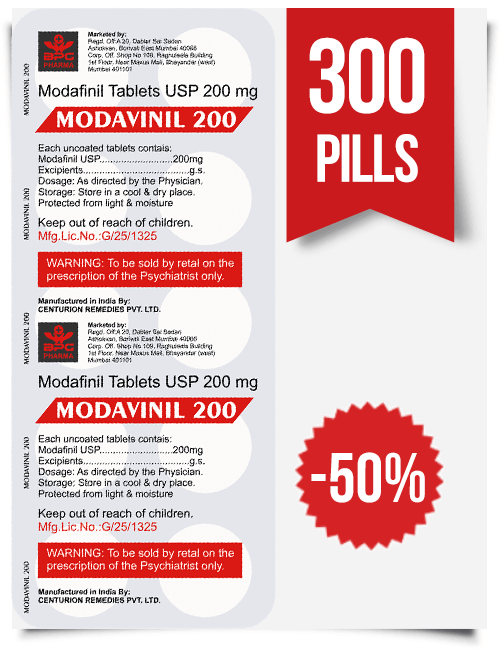Alcoholism Case Study Evolve
This chapter shall unfold alcoholism case study which evolves with a special hypothetical scenario. According to DSM-IV, alcoholism, also known as alcohol dependence, is a common disorder. Lifetime prevalence rates vary widely according to the methodology used, but probably close to 10% of the U.S. population is affected. Asians, however, particularly those from China, Korea, and Japan, appear to have much lower rates. At all ages alcoholism is more common among males than females; however, given the somewhat later age of onset in females, the ratio tends to decrease in higher age groups; overall the ratio is probably 3:1.
 |
| Alcoholism case study evolve |
Alcoholics and alcohol abusers are recurrently and persistently beset with an urge to drink, an urge that is of sufficient compellingness for them to continue to drink despite the fact that their drinking has sustained substantial damage to their health and personal or business affairs. Amongst alcoholics, but not in alcohol abusers, one also sees the development of both craving and of neuroadaptation, with either tolerance or withdrawal. It needs not be overemphasized that alcohol abuse contributes to world highest addiction record and heavy drinking, one of the leading cause of death.
Although some otherwise typical onsets have been described in patients over 60, it is rare for the onset to occur past the age of 45. The onset in women tends to be later than that in men. Alcoholics who concurrently have an antisocial personality disorder seem to have an earlier onset, generally in the teenage years.
Although precisely dating the onset is very difficult, many alcoholics, in retrospect, can point to a period in their lives when they “crossed the line,” after which their efforts to control their drinking became futile.
Specifically, Bennard had been drinking since 8 years old.
Clinical features
In a full-blown case of alcoholism, drinking has become the primary need in an alcoholic’s life, to the detriment or neglect of almost all other activities. The urge to drink may be experienced as a craving, an imperious need, or a compulsion; at times, however, when the alcoholic is off guard it may merely sneak up insidiously, and the alcoholic may begin drinking without knowing why.
Denial is ubiquitous in alcoholism. Almost all alcoholics deny they have a problem with drinking or rationalize it one way or another. They are often quick to lay blame for their drinking on situations or other people. Upon close inquiry, however, one often sees that drinking is in large part autonomous. Although stressful events may be followed by increased alcohol consumption, the alcoholic is also intoxicated during the good times, or simply the neutral times of life.
Most alcoholics make attempts to control their drinking, and although they may have some successes, these are generally short-lived. This “loss of control” was at one point considered the hallmark of the alcoholic. However, it may be just as fair to say that the hallmark is rather a sense of a need to control. Normal people do not experience a need to control their drinking; they simply stop, without giving it a second thought.
When alcoholics do drink, most eventually become intoxicated, and it is this recurrent intoxication that eventually brings their lives down in ruins. Friends are lost, health deteriorates, marriages are broken, children are abused, and jobs terminated. Yet despite these consequences, the alcoholic continues to drink. Many undergo a “change in personality.” Previously upstanding individuals may find themselves lying, cheating, stealing, and engaging in all manner of deceit to protect or cover up their drinking. Shame and remorse the morning after maybe intense; many alcoholics progressively isolate themselves to drink undisturbed. An alcoholic may hole up in a motel for days or a week, drinking continuously. Most alcoholics become more irritable; they have a heightened sensitivity to anything vaguely critical. Many alcoholics appear quite grandiose, yet on closer inspection, one sees that their self-esteem has slipped away from them.
Most alcoholics also display an alcohol withdrawal syndrome when they either reduce or temporarily cease consumption. Awakening with the “shakes” and with the strong urge for relief drinking is a common occurrence; many alcoholics eventually succumb to the “morning drink” to reduce their withdrawal symptoms.
Some degree of tolerance occurs in all alcoholics. Here the alcoholic finds that progressively larger amounts must be consumed to get the desired degree of intoxication; if the amount is not increased, the alcoholic finds that the degree of intoxication becomes less and less. Some alcoholics, however, late in the course of the disorder may experience a relatively abrupt loss of tolerance that can be profound. The alcoholic who routinely drank a quart of whiskey a
Other disorders are often seen concurrent with alcoholism, including major depression, panic disorder (with or without agoraphobia), social phobia (of the generalized type), and, somewhat less commonly, bipolar disorder and schizophrenia. Of the personality disorders, antisocial personality disorder occurs in male alcoholics more often than one would expect by chance; the same is true for borderline personality disorder among female alcoholics.
Alcohol abusers are similar to alcoholics in that they continue to drink despite serious adverse consequences. But abusers are different from alcoholics in two ways. First, most alcohol abusers do not develop neuroadaptation as manifested by tolerance or withdrawal; the sustained drinking generally required to produce these phenomena is for the most part seen only in alcoholism. Exceptions, however, exist as some people seem particularly prone to developing withdrawal and may in fact, have the shakes after only a few weeks of drinking, only then to become and remain abstinent. Such people probably do not have alcoholism. Second, one may inquire as to whether the drinker experiences a craving for alcohol rather than merely a desire for it. The alcohol abuser wants to drink and looks forward to it. The same may be true of the alcoholic at times; however, the alcoholic also has a craving for alcohol and because of that craving the ability to choose whether to drink or not is lost. At times the alcoholic simply “has to” drink. Consequences may deter the alcohol abuser, and the abuser may decide to stop because of them and then go ahead and stop. For the alcoholic, however, drinking persists despite the most disastrous consequences; some may continue to drink even while they lie on their death-bed in the hospital.
Course
Alcoholism may run an episodic or a chronic course. The alcoholic who experiences an episodic course is often referred to as a binge drinker. The binges themselves may last for days or weeks; in between them, the alcoholic may go for months or a year or more without drinking at all. The alcoholic with a chronic course may drink on a regular daily basis or have brief periods of abstinence. The “weekend alcoholic” falls in this category. The pattern may change from episodic to chronic over many years. In most cases the complications of alcoholism tend to add up after 10 to 15 years: women tend to experience a more rapid progression than men.
Spontaneous remissions do occur in alcoholism, and they may be missed in epidemiologic surveys, as patients are generally reluctant to discuss their previous drinking. The general clinical impression, however, is that full spontaneous remission is relatively rare. The overall course of alcohol abuse is not as clearly understood: some may stop or successfully moderate their drinking; some may continue to drink abusively for an indefinite period of time without ever developing a craving and neuroadaptation, while some may develop these phenomena, thereby prompting a revision of the diagnosis to one of alcoholism.
Etiology
Family history, twin and adoption studies leave little doubt as to the importance of inheritance in alcoholism, which may account for up to 60% of the risk. Genetic studies, however, have not as yet yielded conclusive results. Earlier studies suggesting an association with certain polymorphisms at the dopamine D2 receptor (DRD2) gene have not been consistently replicated; whether more recent studies suggesting associations with various polymorphisms at the genes for the serotonin transporter or for neuropeptide Y will stand the test of time is uncertain.
Clinical studies of the non-alcoholic sons of alcoholics have yielded some interesting findings, as might be expected given the evidence for inheritance.
Electrophysiologic studies have demonstrated a reduced P300 wave and a reduction in alpha activity while not drinking coupled with an increase in alpha activity while drinking. Of more interest from a clinical point of view, however, is the response of sons of alcoholics to a drink as compared to controls. As a group, these nonalcoholic sons of alcoholics had a lower degree of intoxication than did controls. Furthermore, over long-term follow-up the sons with the lowest response had a 60% chance of developing alcoholism; by contrast, in the sons with the most normal response, the chance of developing alcoholism was only 15%. Clearly, among sons of alcoholics, being able to “hold one’s liquor” is an ominous prognostic sign.
The reduced prevalence of alcoholism among some Asian groups, noted earlier, is related to a differential inheritance pattern of certain normally occurring alleles for aldehyde dehydrogenase. Ethanol is normally metabolized by alcohol dehydrogenase to acetaldehyde, which in turn is rapidly metabolized by aldehyde dehydrogenase to acetic acid. A majority of Asians, however, have forms of aldehyde dehydrogenase which are slow acting, thus allowing for an accumulation
Problems associated with alcoholism
The complications of alcoholism and alcohol abuse are exceedingly numerous. The population of our jails and hospitals would be dramatically reduced without alcoholism. Both alcoholics and alcohol abusers are liable to arrests for public intoxication and driving while intoxicated, and both are more likely to have motor vehicle accidents, to lose jobs and to face separation from their loved ones. Other complications seen in both groups (albeit more commonly in the heavier-drinking alcoholics) include blackouts, alcohol withdrawal (the “shakes”), gastritis and fatty liver.
Alcoholics, in addition to the foregoing complications, are also at much higher risk for other complications, including the following:
Suicide is relatively common in active alcoholics, occurring in perhaps 15%. Risk factors include male sex, depression, unemployment, lack of social supports, and significant general medical illnesses, such as pancreatitis, cirrhosis, and others. An alcohol-induced depression may occur, and indeed such a “secondary” depression is seen in at least one-half of all alcoholics.
If you are looking for psychology case study writing help on alcoholism topics, don't hesitate to visit: https://getcasestudy.com/psychology/.














Leave a Feedback